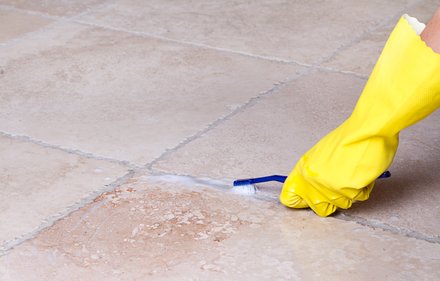

Grout stains can quickly mar the beauty of your tilework, making your kitchen or bathroom look less than its best. This comprehensive guide provides a detailed approach to addressing grout stains and restoring your tile’s pristine shine. From identifying the cause of the discoloration to choosing the right cleaning methods, we’ll walk you through the entire process. This guide delves into various effective techniques and remedies for removing different types of grout stains. We will explore different cleaning methods and address the potential causes of staining, so you can maintain your tiles’ brilliance and overall aesthetic.
Understanding Grout Stains
Common Causes of Grout Stains
Grout stains are a common problem in homes, and understanding the sources can help in the remediation process. Different types of stains result from diverse factors. Some common culprits include spilled liquids, such as coffee, juice, or wine, or food particles that adhere to the porous surface. Over time, mold or mildew can grow in damp grout areas, resulting in dark, unsightly spots. Hard water buildup is another factor, contributing to a dull, chalky appearance. Improper sealing of grout can also lead to staining as spills penetrate the unsealed surface.
Identifying the Type of Stain
Identifying the type of grout stain is the first step in selecting the appropriate cleaning method. Different stains react differently to cleaning agents. For example, water-based stains may respond effectively to a mixture of baking soda and water, whereas oil-based stains may necessitate a stronger cleaning agent, like a commercial grout cleaner.
Effective Cleaning Methods
Mechanical Cleaning Techniques
Grout cleaning often involves a combination of mechanical and chemical methods. Mechanical methods, such as scrubbing with a stiff brush or using a grout cleaning tool, are effective for removing loose debris and surface stains. These mechanical methods should be used cautiously to avoid scratching the tile surface. Start with a soft scrub and slowly increase the intensity, checking for scratches along the way.
Chemical Cleaning Solutions
Numerous commercial cleaning solutions are available to tackle various grout stain types. Baking soda paste, diluted vinegar, and hydrogen peroxide are popular home remedies for mild stains, but it’s crucial to test these solutions on an inconspicuous area first to prevent unwanted discoloration. These are good first steps and if not effective, consider a commercial grout cleaner. Be sure to carefully follow the instructions on the product label.
Preventing Future Stains
Grout Sealing
Regular sealing of grout is a vital step in preventing future stains. Sealing the grout creates a protective barrier that hinders the penetration of liquids and other substances, effectively keeping stains from seeping into the grout. This prevents the build-up and entry of many contaminants. Sealing can be done yourself or consider hiring a professional.
Maintaining Cleanliness
Regular cleaning and maintenance are key to preventing future grout stains. Clean up spills immediately to prevent them from seeping into the grout and causing discoloration. Regularly vacuuming and mopping floors can help remove loose particles that may eventually cause stains.
Advanced Techniques for Stubborn Stains
Professional Grout Cleaning Services
Sometimes, stubborn stains require specialized cleaning methods or professional intervention. If DIY methods don’t yield the desired results, consider hiring professional grout cleaners. They possess the expertise and equipment necessary to tackle challenging grout stains that have become deeply embedded in the grout. They are also able to assist in sealing the affected area.
Specialized Cleaning Agents
Some specialized cleaning agents are available for different types of grout stains, such as bleach-based solutions for mold and mildew stains. Use with care and always test the cleaning agent on an inconspicuous area first. They can have potential negative side effects so be careful.
Choosing the Right Cleaning Tools
Selecting Brushes and Tools
Consider the type of grout and tile surface when selecting cleaning tools. For example, stiff-bristled brushes might be suitable for some grout types, but could potentially scratch softer tiles. Use a soft brush if you are uncertain. Avoid abrasive scrubbing, as this could damage the tile.
Using Grout Cleaning Tools
Specialized grout cleaning tools, such as grout brushes with different bristle types or grout cleaning attachments for pressure washers, can effectively tackle various grout stains. Consider the type of grout cleaner when using these tools.
FAQ
What are the most common causes of grout stains?
Grout stains frequently stem from spilled liquids, like coffee, juice, or wine, or food particles. Mold and mildew, hard water buildup, and improper sealing also contribute to grout staining. Addressing these underlying issues can prevent future occurrences.
How can I effectively clean grout stains?
Effective cleaning involves both mechanical and chemical methods. Mechanical cleaning typically involves scrubbing with a stiff brush or a grout cleaning tool, while chemical solutions such as baking soda paste, diluted vinegar, or hydrogen peroxide, can be used as well. Testing on a hidden area first is vital to avoid unintended discoloration.
In conclusion, cleaning grout stains and restoring shine requires a thorough understanding of different grout types and effective cleaning methods. By following the steps outlined in this guide, you can effectively tackle grout stains, maintain the aesthetic appeal of your space, and enhance the overall value of your property. For any further questions or concerns, our team is always ready to assist you. You can visit our website for more tips and tricks related to home improvement, and cleaning and restoration. Don’t hesitate to reach out to us for any other questions or concerns you might have.